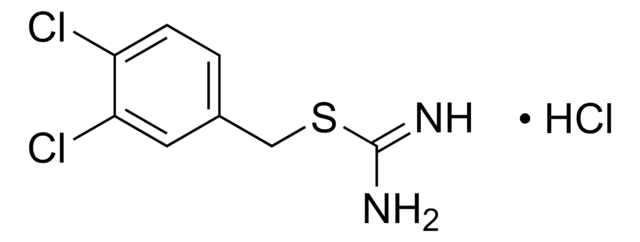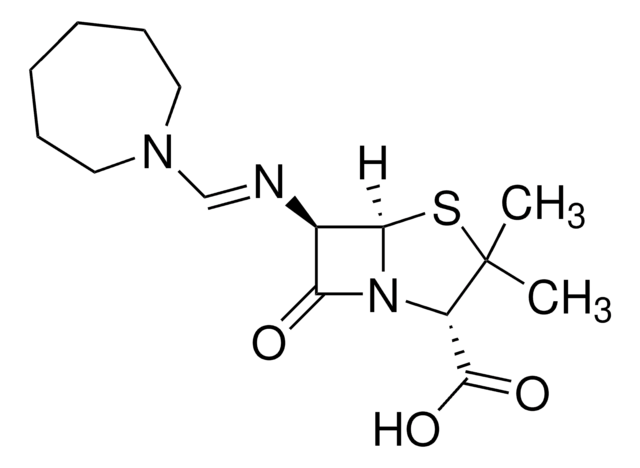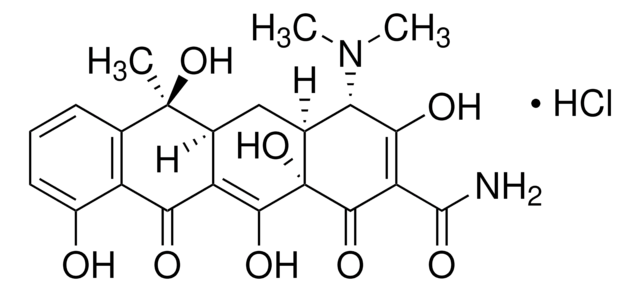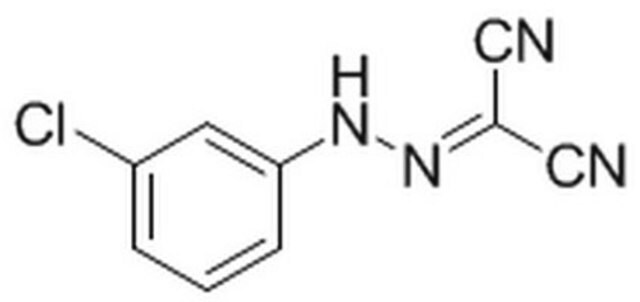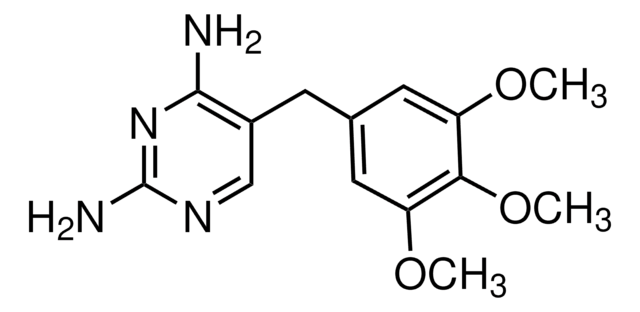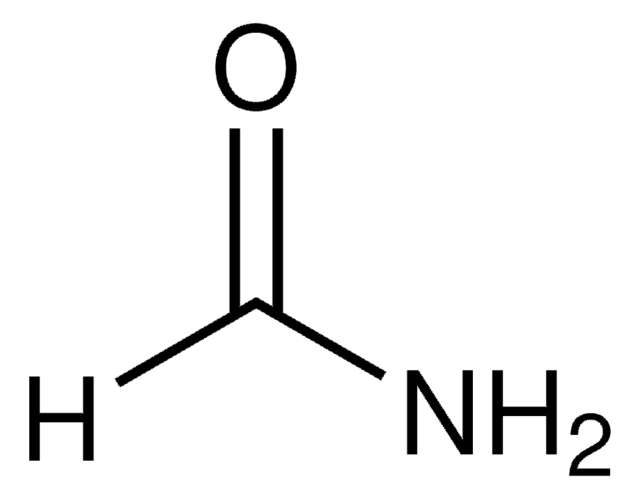475951
MreB Perturbing Compound A22
A cell-permeable isothiourea compound that specifically, rapidly and reversibly perturbs MreB function without affecting eukaryotic actin polymerization.
Synonim(y):
MreB Perturbing Compound A22, S-(3,4-Dichlorobenzyl)isothiourea, HCl
About This Item
Polecane produkty
Poziom jakości
Próba
≥95% (HPLC)
Formularz
solid
producent / nazwa handlowa
Calbiochem®
warunki przechowywania
OK to freeze
desiccated (hygroscopic)
protect from light
kolor
white
rozpuszczalność
water: 2 mg/mL
DMSO: 200 mg/mL
Warunki transportu
ambient
temp. przechowywania
2-8°C
ciąg SMILES
S(Cc1cc(c(cc1)Cl)Cl)\C(=N\[H])\N.Cl
InChI
1S/C8H8Cl2N2S.ClH/c9-6-2-1-5(3-7(6)10)4-13-8(11)12;/h1-3H,4H2,(H3,11,12);1H
Klucz InChI
VBJNMXMOMSWRDV-UHFFFAOYSA-N
Opis ogólny
Działania biochem./fizjol.
MreB
Opakowanie
Ostrzeżenie
Rekonstytucja
Inne uwagi
Jensen, R.B., et al. 2002. Nat. Rev. Mol. Cell Biol.3, 167.
Iwai, N., et al. 2002. Biosci. Biotechnol. Biochem.66, 2658.
Informacje prawne
Kod klasy składowania
11 - Combustible Solids
Klasa zagrożenia wodnego (WGK)
WGK 3
Temperatura zapłonu (°F)
Not applicable
Temperatura zapłonu (°C)
Not applicable
Certyfikaty analizy (CoA)
Poszukaj Certyfikaty analizy (CoA), wpisując numer partii/serii produktów. Numery serii i partii można znaleźć na etykiecie produktu po słowach „seria” lub „partia”.
Masz już ten produkt?
Dokumenty związane z niedawno zakupionymi produktami zostały zamieszczone w Bibliotece dokumentów.
Nasz zespół naukowców ma doświadczenie we wszystkich obszarach badań, w tym w naukach przyrodniczych, materiałoznawstwie, syntezie chemicznej, chromatografii, analityce i wielu innych dziedzinach.
Skontaktuj się z zespołem ds. pomocy technicznej